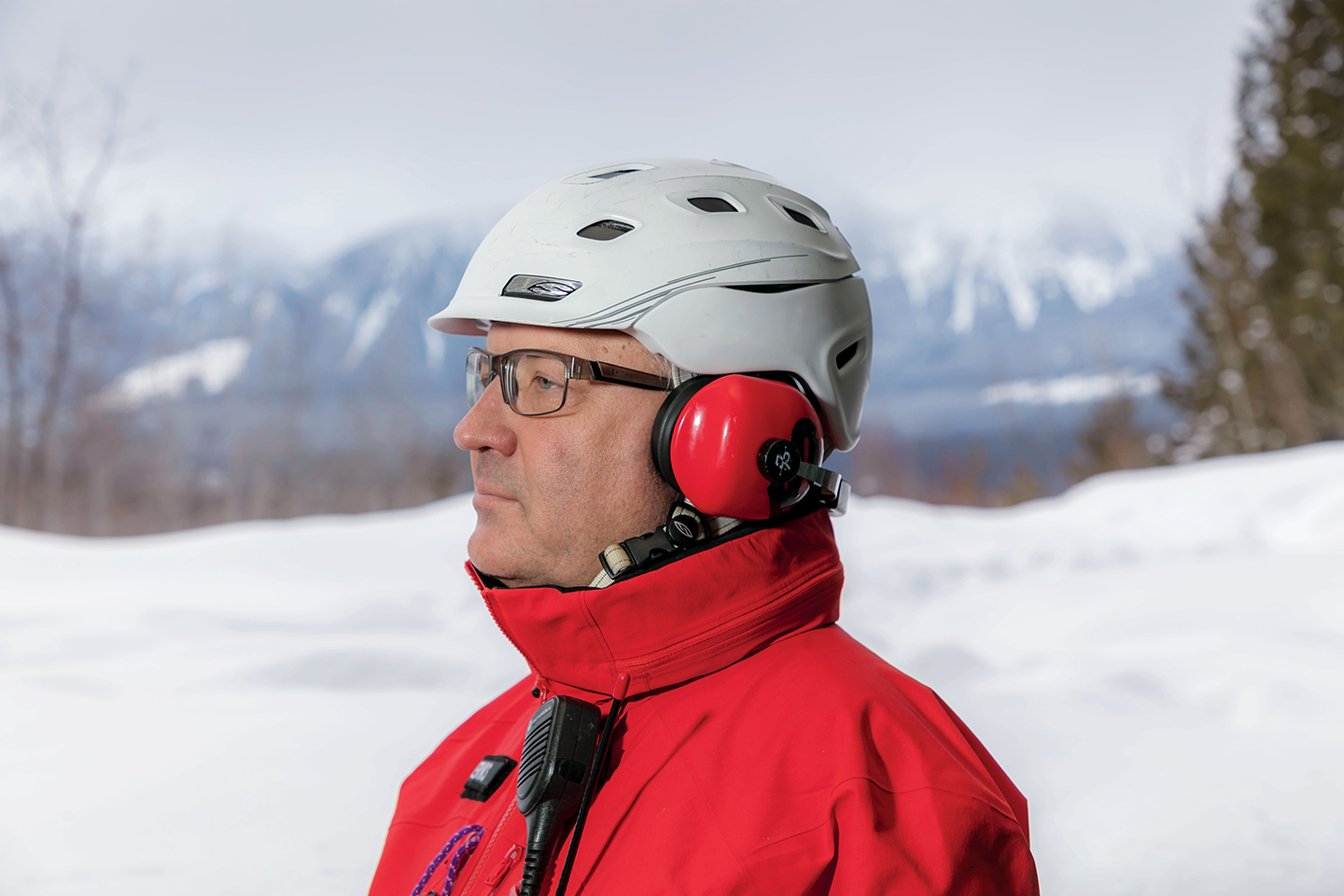Hearing protection in cold weather
Staying safe on the road requires a commitment from employees and employers.
Trying to keep your ears warm and also protected from noise exposure? These tips from an audiologist can help.
Cold weather can present unique challenges for hearing health and safety. Workers can be exposed to potentially hazardous noises in industries across British Columbia, from avalanche control to oil and gas, drilling, road construction, and forestry, among others. When equipment and tasks are at odds with hearing protection, workers risk permanent hearing damage and loss.
“Hearing loss occurs when hair cells in the inner ear are permanently damaged due to repeated exposure to hazardous noise, regardless of the type of noise,” says Sasha Brown, occupational audiologist in our Risk Analysis Unit. “Both the level or intensity of noise, and the duration or amount of time someone is exposed to noise, interact to create the hazard. This is why it is essential for employers to have a hearing conservation program and provide appropriate hearing protection equipment to workers.”
Heli-ski guides are particularly at risk of developing hearing loss because their work involves being in close proximity to helicopters. When the mountains become frosted with snow, they help clients get into the backcountry to chase fresh powder and adventure. Along with the excitement of this line of work, comes exposure to sound levels of around 100 decibels (dBA) from the helicopters they need to work in and around for long periods of time.
What is a safe level of noise?
Noise hazards are calculated by combining the dBA — the intensity of a sound measured in decibels on a sound-level meter — with the duration of time someone is exposed to the noise, Brown explains. Noise levels that exceed 85 dBA over an eight-hour time period are hazardous and could cause noise-induced hearing loss. “Because decibels are a logarithmic scale, a three-decibel increase in noise doubles the amount of exposure.”
- 88 dBA is safe for 4 hours
- 91 dBA is safe for 2 hours
- 94 dBA is safe for 1 hour
- 97 dBA is safe for 30 minutes
- 102.4 dBA is safe for 8 minutes and 37 seconds
“Heli-ski guides face additional risks because they are required to interact with their clients and listen for signs of avalanche danger,” says Brown. “This makes it difficult for guides to wear hearing protection throughout their entire work shifts. They, therefore, need hearing protection that can be easily placed and removed at will.
“A further complication is that guides are required to wear ski helmets, and most noise-reducing earmuffs are not designed to fit around ski helmets. Guides might feel that they cannot wear both a helmet and hearing protection.”
The key, says Brown, is to understand the risks of hazardous noise exposure and protect yourself using the right hearing protection for your line of work. Heli-ski guides should use at least Class B-rated hearing protection because of the intensity and duration of noise to which they are exposed. In other industries, it may be necessary to test out different types of hearing protection to find the option that works best for you and your job.
Five tips you should know about protecting your hearing:
- Know your options for hearing protection. There is no one-size-fits-all when it comes to hearing protection. Investigate and test several different options with your employer to find the right fit for your hearing-protection and work requirements.
- Get an annual hearing test. This is an important way to gather information about whether your hearing protection is working effectively. Changes in your hearing ability could indicate a need to make some adjustments to your hearing protection, including its style, fit, and duration of use.
- Know the hazards of noise. Noise-induced hearing loss is both permanent and preventable. It has also been linked to cognitive decline and dementia, and can lead to social isolation. Get to know the risks associated with noise exposure, including the relationship between hearing loss and sound volume and duration of exposure. And always use sound protection when working around noises that exceed 85 dBA.
- Use well-fitted hearing protection. Hearing-protection needs vary by sector. If you choose to protect your hearing with earmuffs and also work in cold temperatures, you may need to remove your toque or beanie to ensure a proper earmuff seal — a thick toque can reduce hearing protection by up to 24 dBA. If you need to wear a helmet, make sure your earmuffs and helmet are compatible and do not compromise the earmuff seal. You may also opt for semi-insert canal caps or earplugs that fit underneath toques. These should not require a specific type of helmet.
- Frequently inspect your hearing protection. Work that involves a high degree of physicality and that takes place in an outdoor setting can speed up wear and tear on hearing protection. To prevent overexposure to noise from faulty or damaged equipment, inspect your hearing protection before each use.
This information originally appeared in the November/December 2018 issue of WorkSafe Magazine. To read more or to subscribe, visit WorkSafe Magazine.

